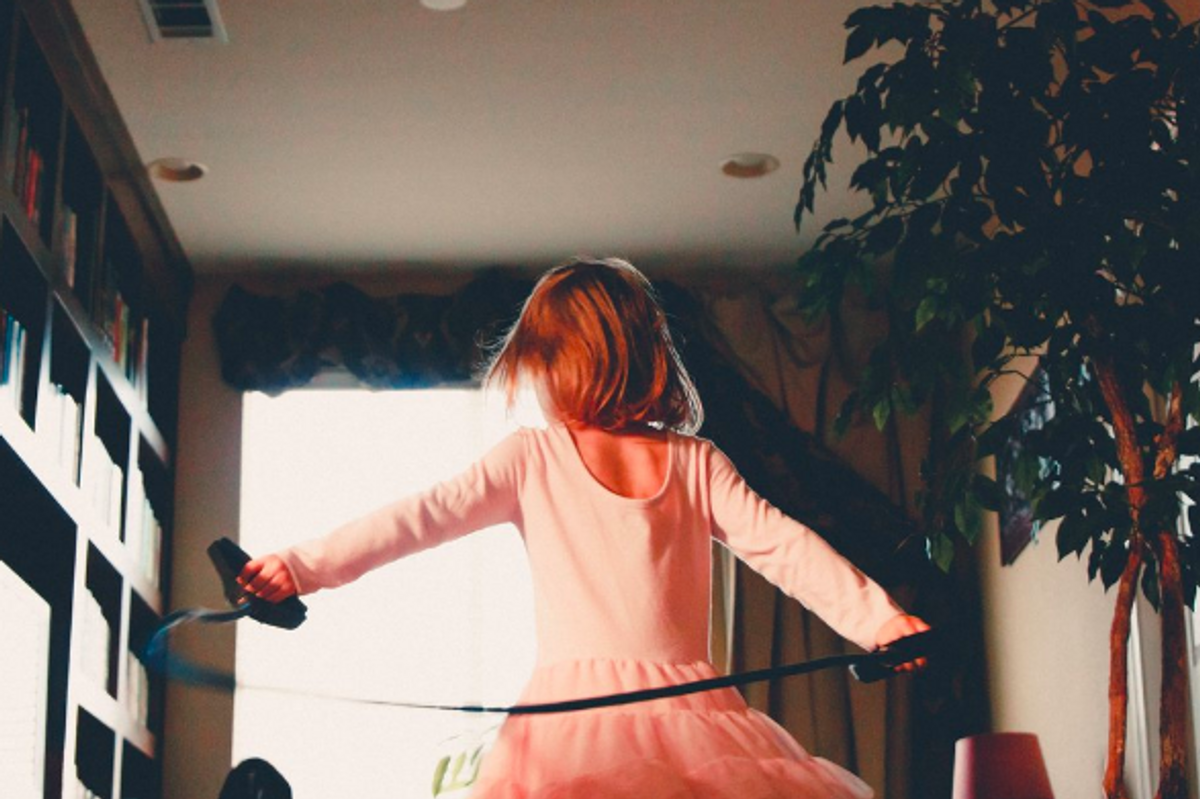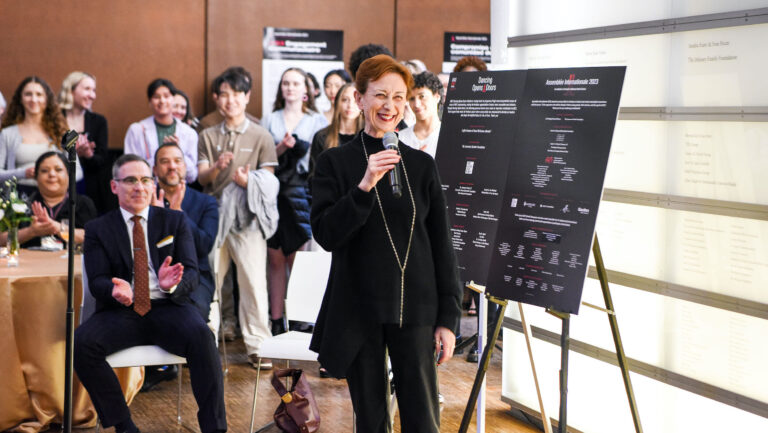
When
news about the lawsuit against New York City Ballet and Chase Finlay emerged last week, plaintiff Alexandra Waterbury, a former School of American Ballet student, told The New York Times:
“Every time I see a little girl in a tutu or with her hair in a bun on her way to ballet class, all I can think is that she should run in the other direction,” she said, “because no one will protect her, like no one protected me.”
It was quite a statement, and it got us thinking. Of course, it’s heartbreaking to imagine the experiences that Waterbury lists in
the lawsuit, and it’s easy to see why this would be her reaction.
But should aspiring ballet dancers really “run in the other direction”? Were her alleged experiences isolated incidences perpetuated by a tiny percentage of just one company—or are they indicative of major problems in today’s ballet culture within and beyond NYCB’s walls?
We reached out to a variety of authorities in the field to hear their reactions to her statement.
Susan Jaffe:
“I don’t see any truth to what Ms. Waterbury said in that last sentence in The New York Times article. There are many companies out there with directors who not only care about the vision and success of their company, but also about the well-being and safety of their dancers.
“It is sincerely unfortunate that the leadership of the New York City Ballet decided to look the other way regarding these egregious acts, because putting the well-being of their female employees in harm’s way will haunt them for a very long time—if not forever. I am deeply saddened that the dance world has been stained by a very small group of people who lack a sense of responsibility, discernment and wisdom.
“Our only hope is that the NYCB will find a leader who can not only take the company to new and creative heights, but also has the courage, gravitas and wisdom to establish and reinforce an environment that is healthy for all concerned.”
Former American Ballet Theatre principal Susan Jaffe is the dean of dance at the University of North Carolina School of the Arts.
Marina Harss:
“At this point, these are allegations, and we need to wait for the case to develop further. But the most worrisome aspect for me, in addition to the obviously worrying question of how women have been and are being treated at this company, is the lack of transparency we’ve seen so far with allegations of sexual misconduct and abuse of power, and not just at NYCB. What does a resolution like the one made by the independent investigator in the Peter Martins case, that the charges could not be corroborated, actually mean? Did it happen or didn’t it? I believe in due process—not every accusation will turn out to be true, in any realm of life. But without a good faith effort to obtain clear answers, in which people feel empowered to come forward and tell their stories, it’s very difficult to see how companies can effectively get on top of this issue, investigate their own company culture, take steps to make such behavior less likely. Otherwise, they’re just going to end up putting out statements and instituting generic policies. We all know that the behavior alleged in this case is wrong, but what we need to know is whether it’s systemic and widespread so that real steps can be taken to make it less likely to happen again.”
Marina Harss is a dance writer for The New Yorker, The New York Times and The Nation among other publications. She is currently working on a book about Alexei Ratmansky.
Paul Vasterling:
“What a heartbreaking statement. For me, here in a place that has little girls in tutus and buns, we want them to have mind-expanding and life-expanding experiences with ballet. I truly believe that’s what ballet is and what we’re here for. We as directors have a responsibility to provide safety—and a feeling of safety.
“All of this is making me think about how I lead the company, and specifically the women in our company. I read an article about feminism and ballet over the weekend that talked about how, with the way ballet is set up, dancers are often treated as blank slates for male creators to impose a vision on. It made me think about us engendering choices for our dancers. If we don’t give them any agency, why would they want to do this? When you’re working with designers, making a dance, even staging a ballet, it is a collaborative process. Dancers should be treated as collaborators and make choices that affect the work.
“This is a difficult time for ballet. I think we leaders need to listen carefully and be thoughtful about our actions, so that things like this stop happening. I want our art form to thrive and do what it’s supposed to do: Transform lives for the better.”
Paul Vasterling is the artistic director of Nashville Ballet.
Sydney Skybetter:
“The New York Times broke the 2017 story of sexual harassment claims against Peter Martins at the New York City Ballet, but they were far from the only journalistic entity investigating him. The Times printed first because they could publish with anonymous sources, a practice not all papers embrace. Even though many people were sharing experiences with the press, the majority of those sources required protective anonymity, rendering their stories, for the most part, unpublishable. Folks who want anonymity have their reasons, and fear of reprisal is an obvious disincentive for anyone with knowledge of harassment or abuse to share anything. To put it another way, those who asked for anonymity felt they needed protections they didn’t already have, which says a great deal about the dance world.
“Waterbury’s story and sentiment abundantly rhyme with the pattern of ballet history. Feminist critic Deirdre Kelly, scholar Brenda Dixon Gottschild and historian Jennifer Homans (among others) have abundantly demonstrated how ballet sits at the historical intersection of structures of race, gender, power, sex and violence. Arguably, one outcome of this history is that institutions like NYCB have become adroit at the management of legal protections and tactical public relations required to contain discourse on abuse. I find it notable that, to date, the only public comments I’ve seen from NYCB pertaining to Waterbury’s claim are, first, an email sent only to patrons offering thanks for support “during what has been, to put it mildly, a challenging year,” and second, a statement issued directly to The New York Times and apparently not made available to anyone else. While I’m sure NYCB takes claims of abuse seriously on some level, I believe Waterbury’s point holds here. Historically, functionally, and fiduciarily, the ballet protects its students from harm inasmuch as doing so inoculates against legal claims and threat of institutional collapse.”
Sydney Skybetter is a choreographer, lecturer and public humanities fellow at Brown University.
Jenifer Ringer Fayette:
“Ballet, as an art form, celebrates the idealistic virtues of humanity: beauty, love, self-discipline, respect, honor. With all that has happened recently, the ballet world—really the entire dance world—has the opportunity to check itself. And I am reminded, as an educator, that my team and I have a responsibility not only to raise up great dancers but to also raise up great individuals who will contribute in positive ways to a larger community. We want dancers going out into the world not to tear others down but to instead build others up, exhorting each other to embody ideals of character and action while we all pursue excellence in dance.”
Former New York City Ballet principal Jenifer Ringer Fayette is the dean of the Trudl Zipper Dance Institute and director of the Colburn Dance Academy.



